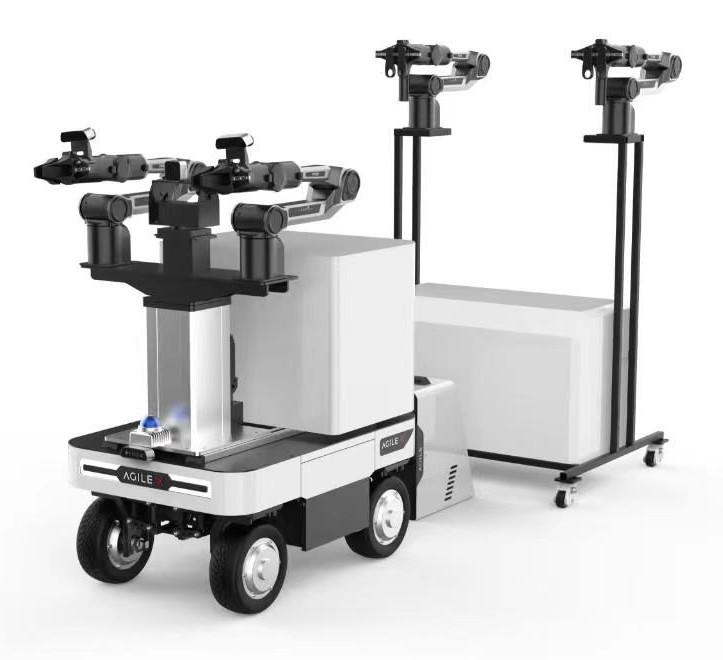MoBiT (Modular Bimanual Teleoperation Platform)
MoBiT is a cutting-edge mobile manipulator platform inspired by the Mobile ALOHA project. It is designed to push the boundaries of bimanual teleoperation and autonomous mobile manipulation.

Highly Modular Design
Unlike traditional integrated systems, MoBiT features a highly modular architecture where the controller station is separate from the main robot. This unique design allows for exceptional flexibility in deployment, enabling operation even with a large separation between the operator and the robot. This makes it ideal for remote operation scenarios, hazardous environments, or distributed research setups.
For more technical details on the split architecture, please refer to the official GitHub repository: Mobile ALOHA Split Branch.
Arm Compatibility
MoBiT is designed to be versatile and is compatible with a wide range of robotic arms to suit different needs and budgets:
- Piper Arms: Fully compatible with Piper X, Piper L, and Piper H models.
- AgileX Nero: Ready for the new AgileX Nero robot arm.
Premium Hardware & Software
We ensure that MoBiT is ready for advanced AI and simulation workloads out of the box:
- High-Performance Compute: Comes with a computer upgrade featuring the Nvidia RTX 4000 Ada graphics card, providing the necessary power for complex model training and real-time inference.
- EU Built: The computer system is built and assembled in the EU, ensuring high quality and reliability.
- Comprehensive Documentation: Includes a software manual written by Autodiscovery, guiding you through setup, operation, and development.
Navigation Options
To ensure the robot can navigate its environment effectively, MoBiT offers flexible navigation solutions:
- Navis: Our proprietary navigation solution for robust and easy-to-use autonomy.
- Open Source (ROS 2): Full support for ROS 2 based navigation stacks, allowing researchers to leverage the vast open-source ecosystem.
